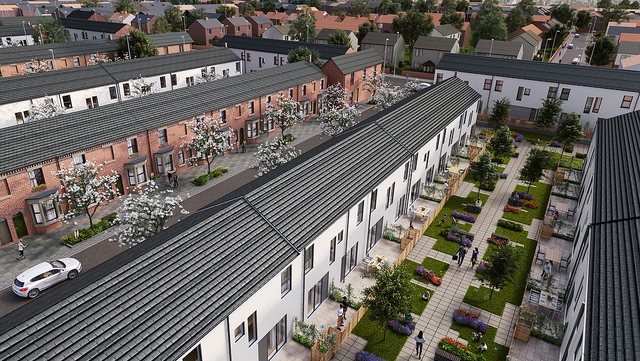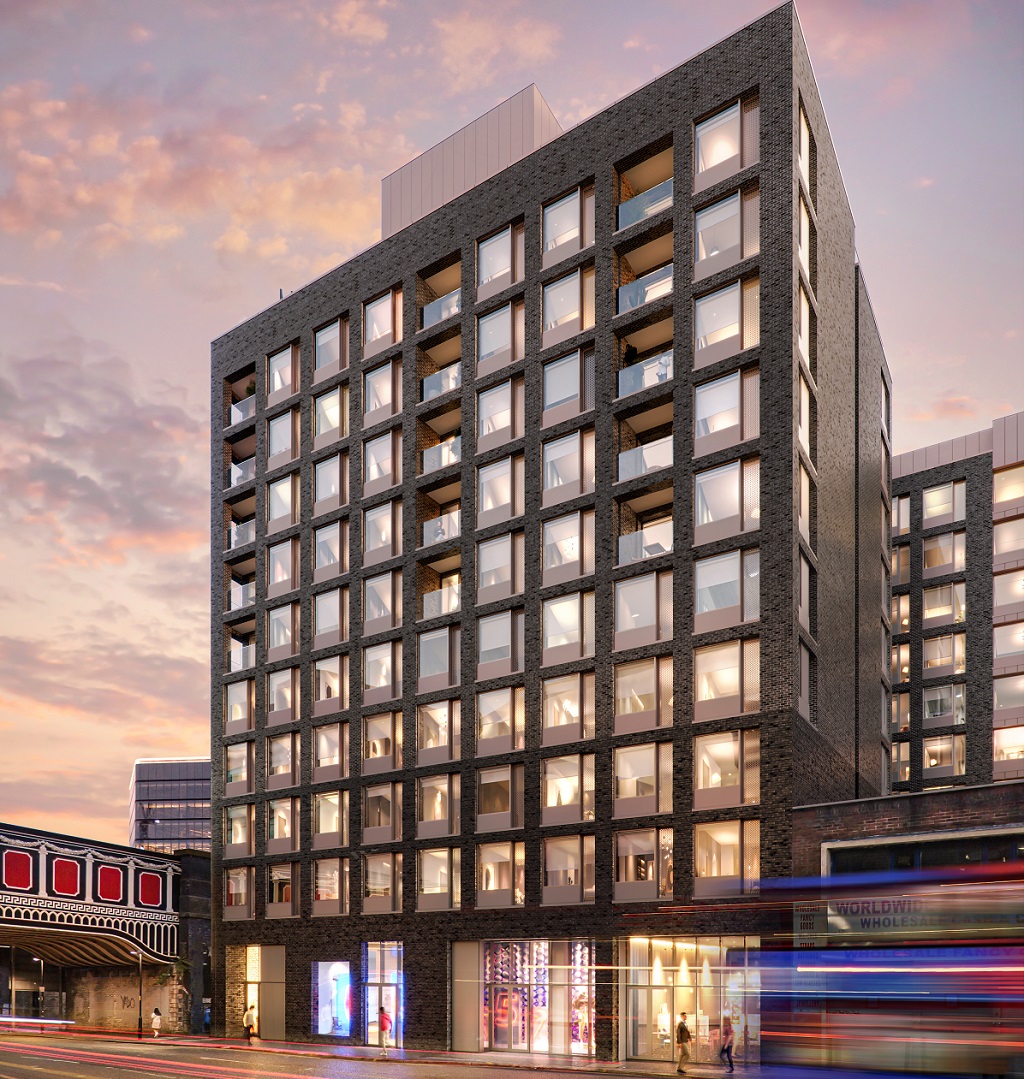Commentary
COMMENT | Urban revival to urban renaissance
Invest in heritage and transport, but don’t build cul-de-sacs if you want to add value to cities, write Nicholas Boys Smith and Maddalena Iovene of Create Streets, reflecting on the social enterprise’s new research into Manchester and Liverpool.
At one level the recent history of the two great North Western cities is simple: the cities of cotton and Atlantic trade were hit hard by changing technology, increased relative labour costs and containerisation. Jobs were lost.
People left. Manchester’s population fell sharply from over three quarters of a million in 1931 to only 422,000 in 2001. Only in the last quarter of a century have the cities revived. Liverpool’s city centre population quadrupled in the 20 years up to 2012.
Employers and entrepreneurs have increasingly been able to generate income and employment in both cities. The University of Manchester is a global fulcrum of innovation and investment. Greater Manchester now has more millionaires than any area outside London.
But – with apologies – both cities still undershoot compared to what they once were and could be again. Liverpool’s population remains only 55% of what it was 80 years ago.
And a study comparing the UK’s primary urban areas ranked Liverpool amongst the lowest for key economic, demographic and social indicators. 70% of the city’s electoral wards are within the 10% most deprived in England and Wales.
How could these two cities do better and turn their central urban revival into city-wide urban renaissance?
Our recent report, Beyond Location, provides some clues. We’ve taken advantage of the ‘big data’ revolution and of new techniques for analysing values and wellbeing by conducting a uniquely wide, analysis of every single 2016 property sale in six English cities – Manchester, Liverpool, and four others including London.
We were trying to answer the question: what gives a place value? But some fascinating conclusions emerged for all the cities studied about what they are doing right – and wrong.
First up, investment in good public transport does pay real dividends in people’s desire to live and work in certain places. In Manchester, properties closer than average to a tram stop are worth £14,000 more than an otherwise similar property which is not. In Liverpool, with no tram, no such dividend.
Second, there is something about historic buildings and neighbourhoods which really appeals to businesses and residents. The heritage premium trumps the new build premium. In Manchester and Liverpool, above average proximity to a listed building was correlated with higher values: £8,215 and £10,155 respectively. The new build premium was tiny or negative.
Thirdly, the renaissance in the Victorian inner-suburbs whose transformation has been one of the driving forces of city rebirth in London and many other towns over 30 years has, statistically, barely begun in either city. In London, the premium associated with such neighbourhoods is nearly £60,000 – over 12%.
In Liverpool and Manchester such neighbourhoods often have a discount. For example in Liverpool, terraced homes – many in bad condition – are associated with a value decrease of £7,329. The size of the city, the number of available jobs have just simply not caught up with the city’s own history.
Finally, don’t build cul-de-sacs. They are positively associated with deprivation in both cities. People avoid them when they can afford it.
What are the implications? For policy makers it is categorically not to repeat the ridiculous Pathfinder policies. You have two great cities, with urban qualities that existentially appeal. But you need the jobs, infrastructure and educated workforce to fill it.
Once the jobs are there you already have the city to appeal to a great workforce. Build more-light rail if you can afford it and attract jobs at all costs. Make the most of your heritage buildings in doing so. Old mills are cooler, more sustainable and more equitable than shiny silver towers.
For investors, if the cities grow the best investment opportunity is probably staring you in the face. You’ll get far better returns and a much happier city if you help regenerate the old terraced houses that surround the city centres than by building any number of silver boxes on a distant hill.
Nicholas Boys Smith is the director of and Maddalena Iovene is a researcher at Create Streets a social enterprise which studies the relationship between urban form with wellbeing and value and supports more effective community-influence on regeneration.





New figures released by the Office for National Statistics show house prices in Liverpool went up by nearly three times the national average of 4.2% over the course of a year. According to property experts, the figures reveal Liverpool currently has one of the strongest property markets in the country but don’t let that get in the way of anecdotal musings from a ‘think tank’!
By J. Southwood
Well quite Mr Southwood. And while Merseyside does not have a tram (which is irksomely slow in the centre where it has to run in the streets) it is a city centre underground railway loop that connect it to suburbs in several directions with innercity and suburban stations along its length. Just in the last few weeks another station has opened in surburban Liverpool at Maghull North.
By Mr Ted
This report again like so many, skirts the total lack of significant investment in both cities over the last half century,particularly regarding transport, from governments of all colours. Of course this applies to Leeds, Birmingham and the Scottish cities too.it is no surprise that the fastest train links are between London, Paris and Brussels and not between London, the West Midlands and the North West.There is a patronising triumphalism about this piece. If more money is spent renovating London Bridge station than is spent on the whole of the West Midlands’ transport infrastructure you do not need to be in Set A for economics as to why our great regional cities have declined.The city doing well is Manchester,since it found a champion in George Osborne but the success of this city is to the detriment of everyone else.Two wrongs simply do not make a right.
By Elephant
Oh dear, the same old anti-pathfinder rhetoric. Actually, one part of attracting jobs to the city is ensuing you have an appealing housing offer, close to the city centre that appeals to a broad demographic. Often that does involve selective demolition of existing council or private stock in order to create development sites to create new modern housing, attractive to different incomes and household types.
There were certainly problems with how Pathfinder was implemented however and this is where I have sympathy with the critics.
Firstly, demolition programmes were far too large, particularly in Liverpool, but the more selective approaches used elsewhere have been successful.
Secondly relying on central funding proved fatal to many schemes; just at the point of delivery both the financial crisis and a change of government (and with it withdrawal of funding) hit all
Pathfinders hard, setting regeneration plans back by almost a decade.
Finally relying on private house builders was a fatal error. Their business model was fundamentally unsuited to this sort of regeneration and the quality of some the new housing was poor and very alien to the existing inner city typographers. No wonder the end result has left some communities wondering if it was all worth the bother.
Otherwise an interesting article from Create Streets but please let’s not go down the road of trying to apply blanket solutions or making sweeping recommendations to what are inherently local problems.
By Regenr8R
Liverpool, not having a tram system is meaningless, especially when one is aware of Liverpool trumping it’s easterly neighbour by having a metro rail system, (all below ground level in the city centre,) a metro rail system with a ridership second only to that of the capital.
What a totally transparent piece of anti Liverpool propaganda Smith and Levene have produced.
By Dixie Dean
Leeds doesn’t have a tram and is still the most successful city in the North with half the deprivation of Liverpool.
By Truth
Leeds is only considered successful because of its boundaries which takes in lots of green fields, sheep, hedgrerows, farms and some affluent housing, all of which serves to mask its areas of deprivation and poorly performing post industrial districts.
By Untruth